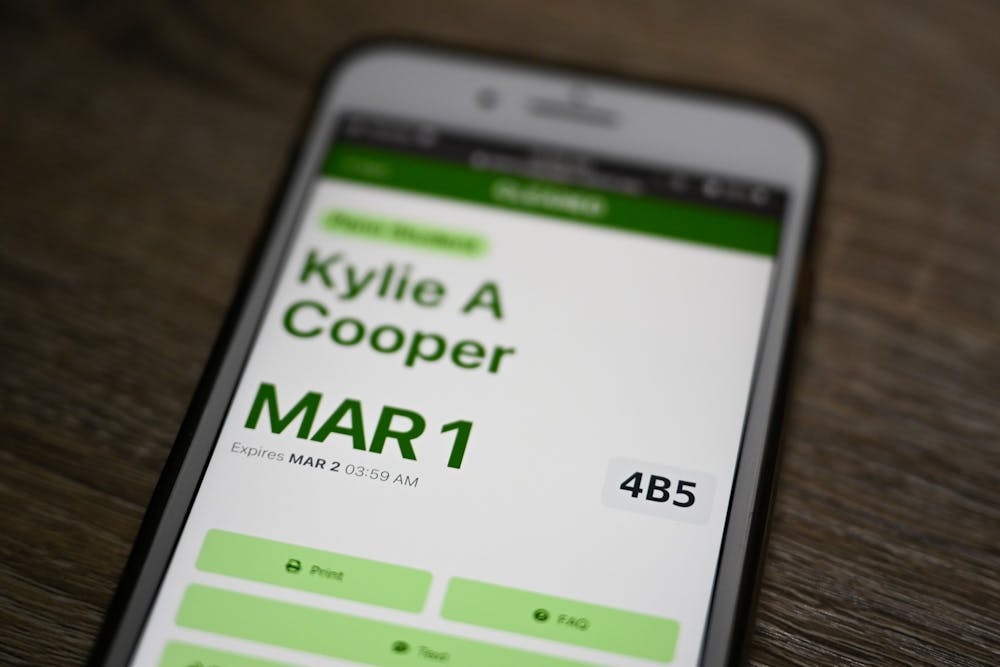In an effort to prevent the usage of fraudulent passes, Penn has added a randomly generated, three-digit alphanumeric code that changes each day on green PennOpen Passes.
Chief Wellness Officer Benoit Dubé and Chief Operating Officer for Wellness Services Erika Gross confirmed that students had been creating fake green PennOpen Passes to access campus buildings when they did not actually meet the required criteria to enter that building. The new policy took effect on Feb. 24 and was first announced on Feb. 23 in an email to administrative leaders.
The three-digit code will be randomly generated each day at 4 a.m., and screeners that check PennOpen Passes before admitting users into Penn buildings are tasked with ensuring each pass has a code that corresponds to the current day.
PennOpen Pass is a web-based daily symptom checker and exposure reporting system for all members of the Penn community and determines whether an individual is allowed inside Penn buildings and on Penn transit. Depending on how Penn community members respond to the survey, they will either receive a green Pass granting them access to campus buildings or a red Pass that forbids access to campus buildings and contains instructions to contact Penn officials.
Dubé said when Campus Health officials first learned of the prevalence of fake green Passes, University administrators instructed screeners to ask students to scroll to the bottom of the PennOpen Pass website to show the footer of the site. Officials were also told not to accept screenshots of green Passes.
With the new antifraud changes, Dubé and Gross said they are confident that fake PennOpen Passes are a thing of the past, but said they were still frustrated by the need to change the system in the first place.
“The other side of this is that someone took the time to do this and then we had to take the time to react to it,” Gross said. “Now, we have to go back and look at all the processes we have built and that takes time away from people being able to do other things."
RELATED:
Pritchett estimates ‘50-50 chance’ Penn will launch student vaccination campaign by May
Drunk, maskless, uncooperative: Student parties place police officers at risk









